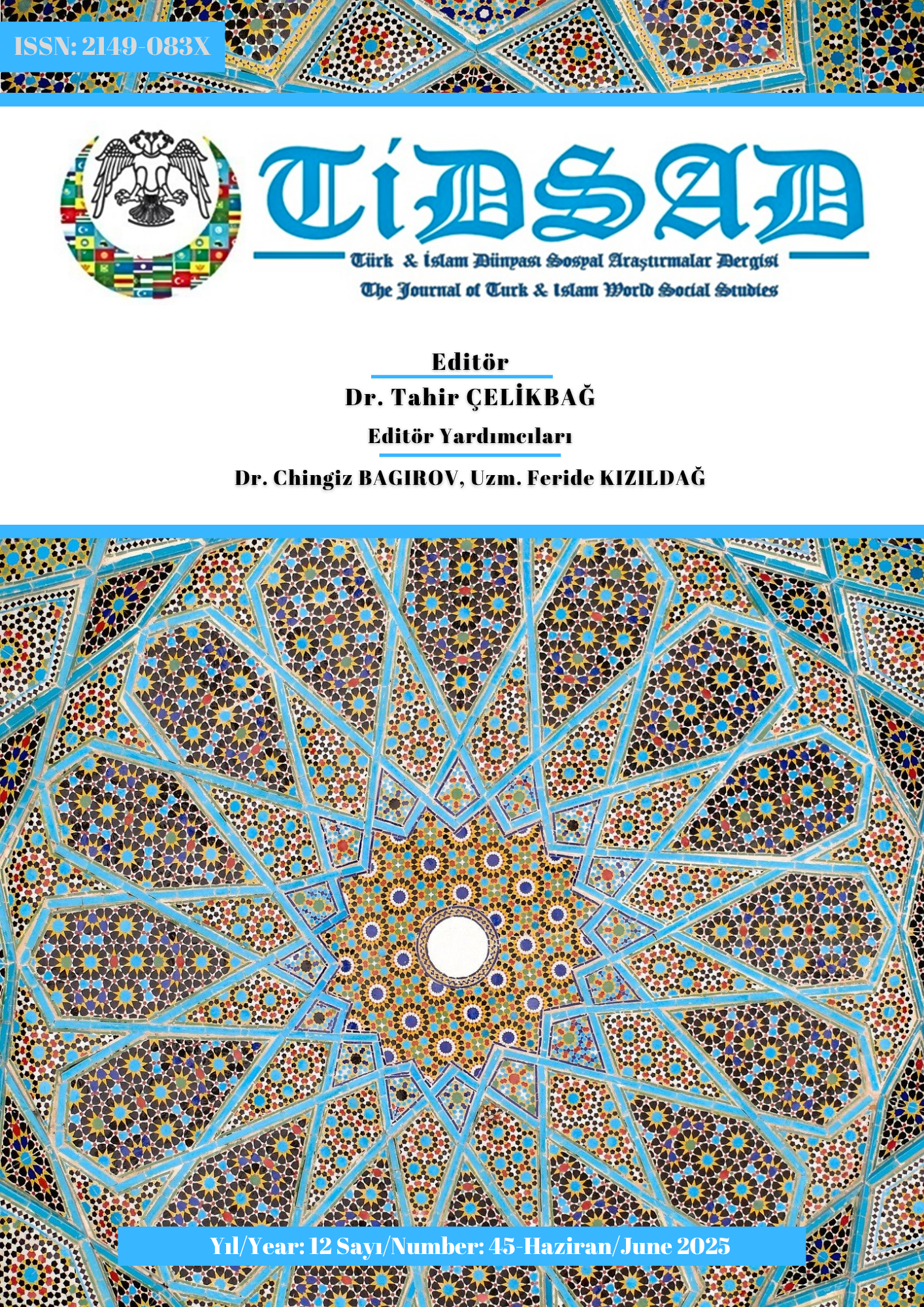Author :
Abstract
Türk Edebiyatında destan geleneğinden halk hikâyeciliğine geçişin en önemli eserlerinden Dede Korkut, Oğuzların bilge lideri Dede Korkut tarafından anlatılan hikâyelerden oluşmaktadır. Göçebe Oğuz halklarının sosyal yaşam tarzları ve İslam öncesi inanç tarzlarını yansıtan bu hikâyeler, 2019 yılına kadar Dresden, Vatikan ve Ankara nüshalarıyla bilinmekteydi. Bayburt Üniversitesi’nin ev sahipliğinde düzenlenen ‘Dünya Kültür Mirası Dede Korkut Uluslararası Sempozyumu’ adlı sempozyumda Metin Ekici tarafından ‘Kazan Bey’in Ejderhayı Öldürmesi’ adıyla ilim âlemine duyurulan Günbed nüshası, Dede Korkut Hikâyelerinin dördüncü nüshası olarak gösterilmektedir. İran’ın Günbed şehrinde yaşayan Veli Muhammed Hoca’nın özel kütüphanesinde yer alan Günbed nüshası, 31 varaktan oluşmaktadır. Yeni bulunmuş olan Günbed yazmasında 24 manzume ve ‘Kazan Bey’in Ejderhayı Öldürdüğü Hikâye’ yer almaktadır. Dilsel olarak Güney Azerbaycan Türkçesini yansıtan eseri önemli kılan sahip olduğu söz varlığının Tarihî Doğu Türkçesinden izler taşımasıdır. Bu yönüyle, eldeki çalışma Dede Korkut Destanı’nın 2019 yılında ilim âlemine duyurulan Günbed nüshasındaki söz varlığı unsurlarının Tarihî Doğu Türkçesiyle olan bağlantısını ortaya koymayı hedeflemektedir. Çalışmada tespit edilen sözcükler, Tarihî Doğu Türkçesi sözlükleri tanıklığında ses ve şekil bilgisi temelinde karşılaştırılmış, devamında sözcüğün Günbed nüshası özelinde Türkiye Türkçesi ve Azerbaycan Türkçesinde ulaştığı görünüm ve izlere odaklanılmıştır. Nitel araştırma kapsamındaki bu çalışmada, veri toplama araçlarından doküman analizi tekniği kullanılmıştır. Geçmişin izlerini belgeleyen tarihsel kayıtların sistematik biçimde incelenmesi yoluyla elde edilen yazılı verilerin yorumlanması olarak tanımlanan doküman analizi, çalışmada dilbilimsel inceleme metotlarından karşılaştırmalı yöntemle desteklenmiştir.
Keywords
Abstract
Dede Korkut, one of the most important works of the transition from epic tradition to folk storytelling in Turkish Literature, consists of stories told by Dede Korkut, the wise leader of the Oghuz. These stories, which reflect the social lifestyles and pre-Islamic beliefs of nomadic Oghuz peoples, were known until 2019 in the Dresden, Vatican and Ankara manuscript. The Günbed manuscript, which was announced to the world of science under the name 'Kazan Bey's Killing of the Dragon' by Metin Ekici at the symposium titled ‘World Cultural Heritage Dede Korkut International Symposium' hosted by Bayburt University, is shown as the fourth manuscript of the Dede Korkut Stories. The Günbed manuscript, which is in the private library of Veli Muhammad Hoca, who lives in the city of Günbed in Iran, consists of 31 varays. The newly discovered Günbed manuscript contains 24 verses and 'The Story of Kazan Bey Slaying the Dragon'. What makes the work, which linguistically reflects South Azerbaijan Turkic, important is that its vocabulary bears traces of Historical Eastern Turkic. In this respect, the present study aims to reveal the connection of the vocabulary elements in the Günbed manuscript of the Dede Korkut, which was announced to the scholarly world in 2019, with Historical Eastern Turkic. The words identified in the study are compared on the basis of phonology and morphology in the testimony of Historical Eastern Turkish dictionaries, and then the appearance and traces of the word in Türkiye Turkish and Azerbaijan Turkish in the Günbed manuscript are focused on. In this qualitative study, document analysis technique was used as one of the data collection tools. Document analysis, which is defined as the interpretation of written data obtained through the systematic examination of historical records documenting the traces of the past, was supported by the comparative method, one of the linguistic analysis methods in the study.





